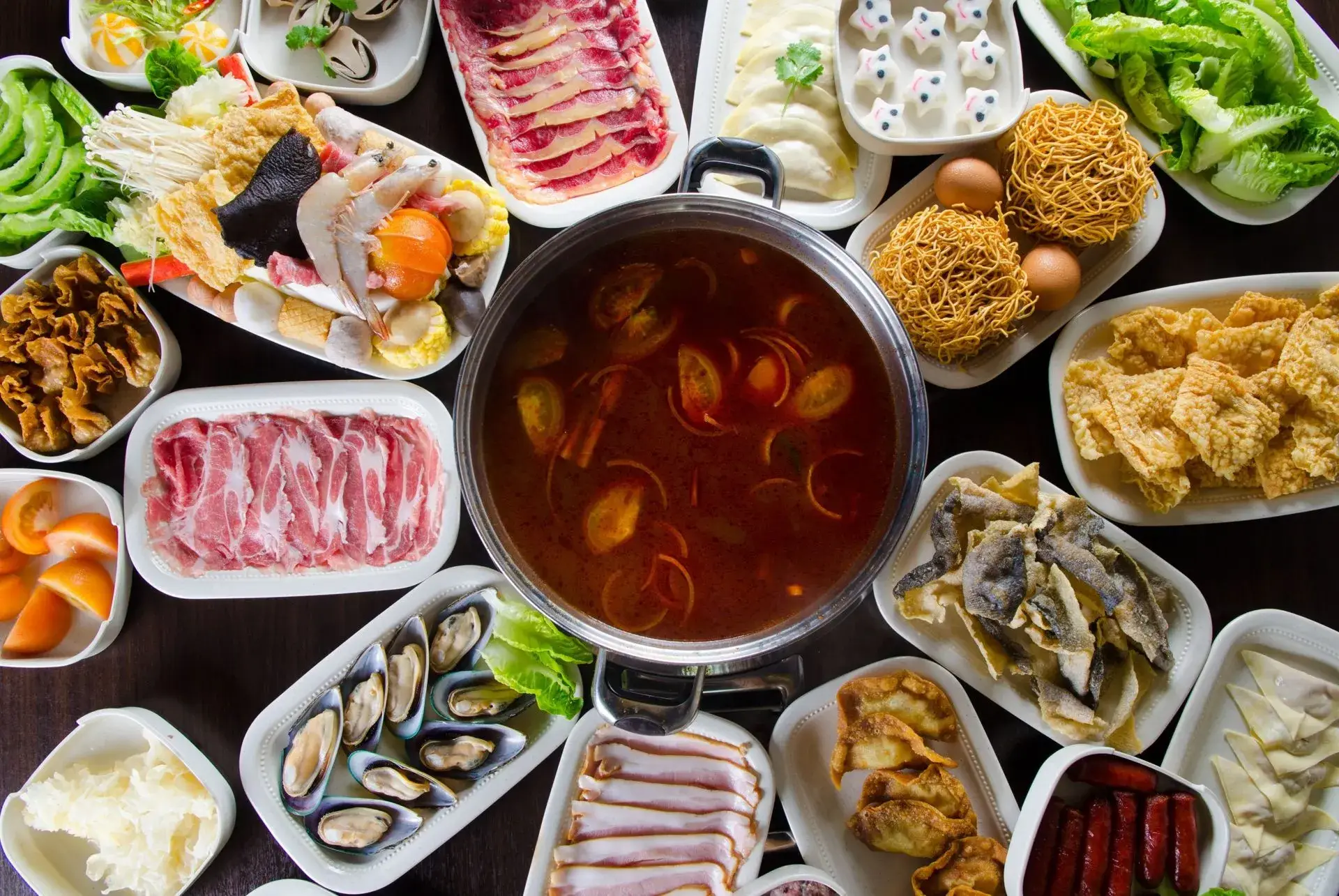Table of Contents
Hot Pot: A Boiling Chinese Carnival That Makes Your Taste Buds Dance the Spicy Tango
In China, there’s a dish that brings CEOs in suits and grandpas from hutongs to the same table, makes spice-wary foreigners tear up while frantically dipping tripe—it’s hot pot, a roiling culinary universe and half of China’s epicurean soul.Chapter 1: The Ancient Roots of Hot Pot—A Millennia-Long Feast in Bronze Cauldrons
Walk into any hot pot restaurant, and you’ll smell history simmering.- Warring States Era: A bronze “ding” cauldron unearthed in Hubei’s Zenghouyi Tomb proves Chinese people were boiling meat communally 2,300 years ago. Nobles cooked venus with plum sauce—more refined than modern molecular gastronomy.
- Genghis Khan’s Military Invention: Mongol warriors boiled mutton in upturned helmets, turning rugged meals into a philosophy of “culinary democracy.”
- The Chili Revolution: When the first American chili pepper fell into Sichuan’s red oil broth in the late Ming Dynasty, it triggered a flavor explosion that changed gastronomy forever.

Chapter 2: The Broth Universe—A Liquid to Transport Your Soul
1. Sichuan-Chongqing Style: A Painful, Euphoric Flavor Bungee Jump
- Broth Base: 4 pounds of beef fat, Pixian bean paste, Hanyuan peppercorns, and Guizhou chilies—the “devil’s trinity”—plus garlic and fermented rice for sweetness.
- Secret Weapon: Eagle tea replaces broth to cut grease and amplify spice.
- Pro Move: Mash boiled pork brain into noodles with crushed peanuts—a Chengdu night owl’s hangover cure.
2. Chaoshan Style: The Art of Butchery
- Broth Simplicity: Clear water + radish slices—because the beef is so fresh, you can taste the pasture breeze.
- Stopwatch Precision: Diào lóng (beef ribeye) for 8 seconds, xiōng kǒu yóu (beef fatty breast) for 3 minutes—locals time it with strainers.
- Sacred Ritual: End with rice noodles to let all meat essences live forever in porridge.
3. Yunnan-Guizhou Style: Wild Mountain Elixir
- Mushroom Broth: Seasonal matsutake, porcini, and hallucinogenic “see-hand-blue” mushrooms brew an umami bomb. Waiters keep samples to counter potential poisoning.
- Sour Soup: Fermented tomatoes sleep in wooden barrels for three months, awakening as amber-hued soul stealers.

Chapter 3: The Ingredient Colosseum—From Tripe to Brain, a Social Climb
A. Carnivore Heaven
- Tripe: Swish it seven times up, eight times down. The crunch of honeycomb texture is like biting a spicy potato chip.
- Pork Aorta: Mimics squid’s chewiness with ASMR-worthy crispness.
- Kidney Slices: Translucent as cicada wings, curling into blossoms in the broth. Chongqing dockworkers dip them in dry spice.
B. Veggie Revolution
- Well-Water Bean Sprouts: “Living” veggies with trembling roots, blanched for 30 seconds with icy freshness.
- Gong Cai: Dehydrated lettuce that resurrects crunchier than jellyfish.
- Fried Tofu Skin: Reborn in oil, it bursts with broth like SpongeBob soaked in lava.
C. Dark Glory
- Pig Palate: Chewier than gummy candy, adored by Chengdu aunties.
- Rabbit Kidneys: Thumbnail-sized flavor bombs that erupt with scalding juice.
- Pork Brain: Velvety as foie gras, boiled 20 minutes in chili oil. Pair with garlic oil to tame the heat.

Chapter 4: Dip Sauce Alchemy—Five Steps to Flavor Nirvana
- Sichuan Style: Garlic paste + sesame oil + cilantro—a spicy-proof coating for your tongue.
- Northern Style: Sesame sauce + leek flower + fermented tofu—Beijing’s answer to Mongolian boldness.
- Yunnan-Guizhou Style: Fish mint + charred chili + litsea oil—dip into Southwest China’s wilderness.
- Cantonese Style: Satay sauce + fried garlic + celery—the final blessing for Chaoshan beef.
- Devil’s Brew: Original broth + bird’s eye chili + rattan pepper oil—best served with antacids.
Chapter 5: Global Hot Pot Adventures—From the Arctic to the Equator
- Swiss Fondue: Chongqingers scoff: “Dipping bread in cheese counts as hot pot?”
- Japanese Sukiyaki: Wagyu wrapped in raw egg—a minimalist ode to umami.
- Thai Clay Pot: Lemongrass and coconut milk tango, with broth drunk post-shrimp boil.
- Sichuan Burn: “A split pot is the last dignity of mild spice lovers.”
Chapter 6: Hot Pot Sociology—China’s Code of Communal Feasting
Before a boiling pot, social hierarchies dissolve:- Business Dinners: The direction of the strainer reveals power plays; who grabs the duck blood tests social grace.
- Date Night: True love is proven by braving chili oil to cook brain for your partner.
- Midnight Therapy: At 2 AM, heartbroken souls dip tripe in tears, while entrepreneurs fish hope from duck intestines.
Final Chapter: The Rite of Becoming a Hot Pot Disciple
- Shed your coat—let your sweater soak in beef fat, the baptismal oil of devotion.
- First bite must be original-spiced tripe—branding your tongue with mala fire.
- Raise a frosty Vitasoy: “To tripe freedom!”
- Make a wish in the rising steam: May life be like hot pot—richer with every boil.



